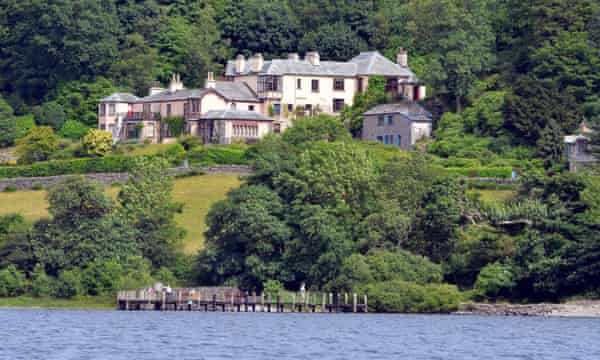
Hidden histories. In 2022, this phrase may bring to mind heated arguments at the National Trust, disputes over controversial statues, and the righteous efforts of campaigners and academics to write various groups of people back into the shared story of these islands. But perhaps it has a double meaning. I’ve always thought of Britain as in some way hidden: a nooks and crannies kind of place, its best and most stirring bits often tricky to find, and all the more thrillingly enjoyable for it.
It goes back to my childhood, I suppose, when we were sometimes taken to clamber on Rowtor Rocks, a gritstone outcrop that stands on the edge of the village of Birchover in Derbyshire. The old story about this collection of carvings and caves goes that they are druid, a tale that’s easy to believe, given that the nearby moors are home to several stone circles. But the truth is rather different. These eldritch altars and thrones were really carved in the 18th century, reputedly by a parson called Thomas Eyre, and this may be the reason why, even as an adult, I still love to climb on them.
It’s mournful that while the French consider, say, Deauville in Normandy still to be terribly chic, we do not think the same of Scarborough in North Yorkshire. But perhaps this doesn’t really matter. Scarborough, like so many places in Britain, is incredibly interesting, a fact that endures even in bad weather (though I would also say that in good weather, Scarborough can be beautiful). This quality is shared with so many places, and it’s one that makes me feel both proprietorial about those I like, and quite evangelically determined to winkle the kind of people who think the countryside begins and ends at the Cotswolds, and that a city break should only ever be taken abroad, out of their comfort zones. Go forth! I think. Open your eyes and your minds.
I want them to see the room at Brantwood, John Ruskin’s house by Coniston Water in the Lake District, where the great critic went mad. At Bamburgh in Northumberland, of course I hope they’ll gawp long and hard at the castle that overlooks the best beach in the world. But I think they should visit, too, the churchyard, where a gothic monument to Grace Darling is to be found, her pale stone effigy flanked by a set of stone oars Darling was the lighthouse keeper’s daughter who, in 1838, rowed out to sea with her father to rescue the passengers of the wrecked Forfarshire, a feat that made her a national heroine. I can’t imagine why anyone would go to Margate without heading first of all to that great and mysterious folly the Shell Grotto. Crab sandwiches can be had later.
In this series, Observer writers recommend their own corners of Britain: here are stone circles and grand houses, gardens and playgrounds, small museums and even more diminutive art galleries. Some are relatively obscure, others are simply – in the eyes of their fans – gravely unappreciated. For my part, I could have written on at least eight different places, each one more lovely and more beguiling than the last; it was hard to choose.
There is an awful lot that is wrong with Britain at the moment, but what it doesn’t lack – what it will never lack – are fascinating places to visit; so many layers to be peeled back and talked over later, on the way home.



